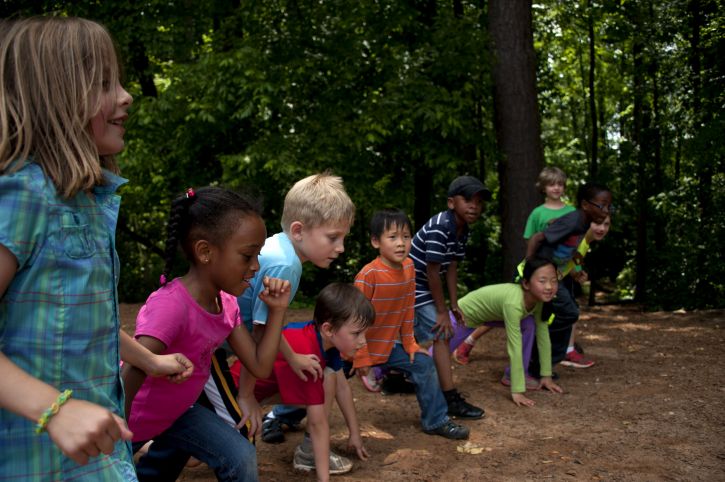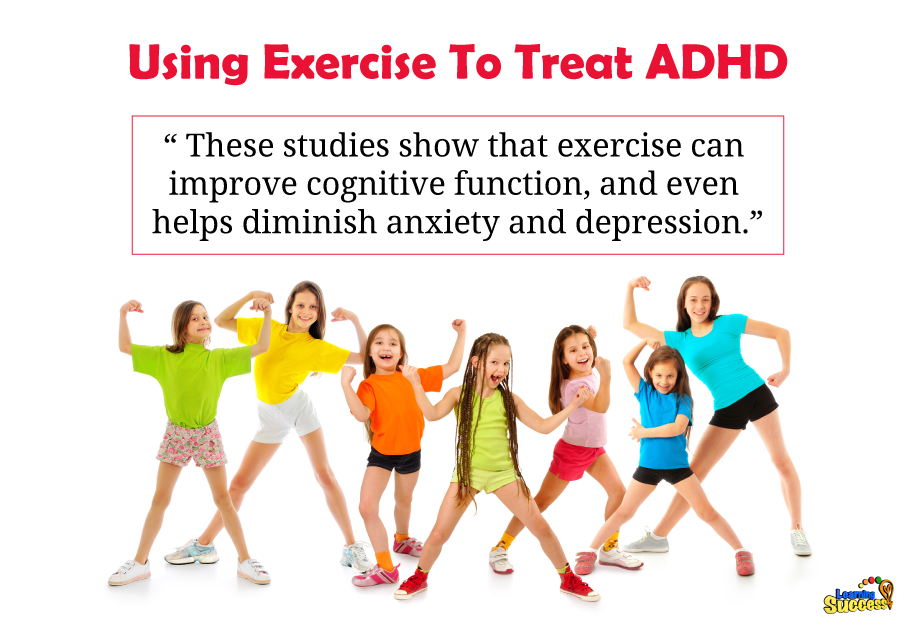
Do you want to help your child with ADHD settle down? Believe it or not, the answer may be to get these kids moving!
Exercise in the classroom has many positive benefits
ADHD is the most commonly diagnosed disorder among U.S. children, with over 6.5 million reported cases as of 2011 according to the Centers for Disease Control and Prevention. Children with ADHD have problems with inhibitory control, and often have trouble paying attention. The usual solution to treating this disorder has been a prescription medication to treat the symptoms.
However, various studies have shown that engaging in exercise helps children improve their cognitive function, focus, and mood. In fact, a mere twenty minutes of moderate-to-vigorous aerobic activity before school can help children with ADHD become more attentive.

An alternative to prescription medication
According to a study by Betsy Hoza, a professor of psychological science at the University of Vermont, exercise releases hormones and brain chemicals that parallel the effects of commonly prescribed ADHD medications, but without the negative side effects which often accompany such meds.
Not only does exercise improve cognitive function, it even helps diminish anxiety and depression. Aerobic exercise in particular may help students with ADHD focus more and improve test scores in school. While exercising, children get a rush of hormones and brain chemicals -- Serotonin, Dopamine, and Norepinephrine -- that can trigger this improvement in mood and concentration.
However, it's important to remember that exercise only has a temporary effect, while the effects of medication can last for many hours. But even still, while it may not totally replace prescription drugs, the exercise has definite benefits that help children perform better academically and feel better about themselves.
A personal story
As a parent of a child with ADHD, exercise as a way to combat the symptoms of ADHD was a breakthrough for our family. For years, it was exhausting trying to get him to sit still and be quietly busy for any amount of time. When he started school, his teachers was fed up with his inability to stay focused in comparison to his peers, and homework time was even worse.
One day, when it got to be too much, I said, "Just go run around and be silly!" My son looked at me funny at first, but after he expended that energy for about 15 minutes, he came back more focused to finish his homework! These cycles of running around and homework have since continued with great success.
With finidngs like this, researchers are pushing for exercise for kids throughout the day. Of course, since this is difficult to achieve, researches suggest some activities which can be done at home with parents. This could include allowing twenty minutes of vigorous activity before boarding the school bus, studying while walking, and exercising before attempting homework.
Key Takeaways:
Exploring options and alternatives for treatment is always helpful. If you or someone you know is having difficulty with ADD or ADHD, then you’ll want to try Learning Success System's assessment. Find out which micro-skills need strengthening and increase learning ability by clicking here.
Do You Need help with a Learning Difficulty?
Our simple online analysis will help you get to the core of the problem and find the right solution for you.
Understanding how to help someone with a learning difficulty starts with understanding which micro-skills are affected. When you learn which of the micro-skills is the problem, you will then be on your way to solving it.
You'll also learn how to:
- Build confidence
- Enhance Learning ability
- Eliminate avoidance
- Build grit
You can get this analysis for free by filling out this simple form. This will help you get to the bottom of a learning difficulty and provide you with a solution. If you are ready to put this problem behind you click the button below and fill out the form.










